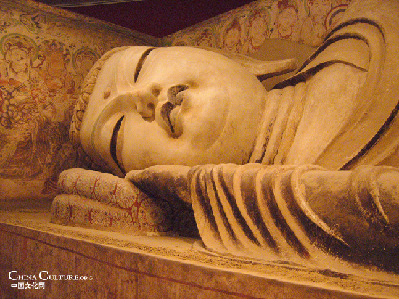| More Valuable Heritage | ||
The “Dunhuang Art Exhibition” was held at the National Art Museum of China (NAMOC) from January 19 to March 21, 2008. Jointly held by NAMOC and Dunhuang Academy China, the exhibition proved to be a big hit in the capital and has drawn over 600,000 visitors all altogether. One can not help wondering how Dunhuang art is capable of creating such a stir. What legacy has Dunhuang left behind? What is Dunhuang art? Dunhuang, a small city in Northwest China’s Gansu Province, used to be an international metropolis with unparalleled prosperity, from the 4th to 14th century. Starting from the 4th century, a monastery complex including more than 700 caves of varying sizes took shape. 492 of these caves in existence were decorated with colored stucco sculptures and mural paintings, forming what is arguably the world's most extraordinary gallery of Buddhist art. The more valuable heritage of Dunhuang art Li Song is a professor with Art Institute of Peking University. He says Dunhuang can be regarded as the museum of mankind from 4th to 14th century. In recent years, some precious relics have been discovered in the northern part of the Mogao Grottoes, including Persian silver coins and copper cross, India-styled dragon painting, a Bible written in Syrian language, and documents written in Tibetan, Mongolian and other languages. Dating back to one hundred years ago, a tremendous amount of artifacts with foreign tint were discovered at Cangjingdong (Hidden Sutra Cave). Li Song says Dunhuang proves to be an axis where cultures of China and neighboring countries, Han Chinese in Central Plain and ethnic groups in Xinjiang, Tibet, and Ningxia in Northwest China intersected. The Mogao statues and murals stand out by virtue of the consummate artistry with which they have been executed. Some of them impress people with their exotic style, which indicates craftsmen from ethnic groups in Northwest China and foreign countries also gave a hand its build-up. Li Song believes Dunhuang art manifests Chinese people are open-minded and ready to embrace different cultures. Maybe, this open mindset is the more valuable and intangible legacy of Dunhuang art. |
|


